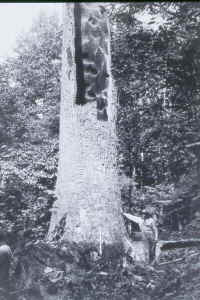 |
The Reems Creek Tuliptree 1 of 2
Here are two scans from two sides of the tree after it burned out and
collapsed A (note massive debris!). There is a section of this tree in the
Sugarlands Visitor Center in Gatlinburg, TN that was removed from the tree
at 53'. The section is, without bark, about 4.5 feet or less in diameter and 350+ years old by ring count. A section
that size is quite small for a giant tree and suggests great taper.
|
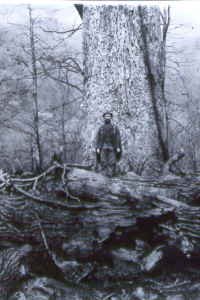 |
The Reems Creek Tuliptree 2 of 2
Here are two scans from two sides of the tree after it burned out and
collapsed A(note massive debris!). There is a section of this tree in the
Sugarlands Visitor Center in Gatlinburg, TN that was removed from the tree
at 53'. The section is, without bark, about 4.5 feet or less in diameter and 350+ years old by ring count. A section
that size is quite small for a giant tree and suggests great taper. |
|
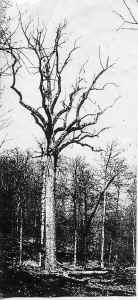
|
A picture of the Reem's Creek tuliptree, from an issue of the Journal of Heredity from 1910, same as the Chestnut oak picture. It's the only picture I've seen that shows the whole tree... Michael Davie |
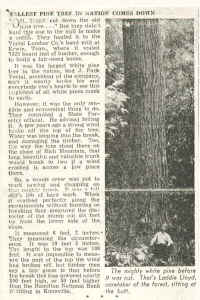 |
Rich Mountain
Pine: Erwin, Tennessee. The tree was cut down after
being damaged by wind. It measured 19' 2" in
circumference and 168' tall. The tree was reported to have
been at least 200 feet tall prior to it's top being broken off
by the wind. The tree yielded 7522 board-feet of lumber. |
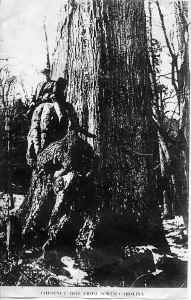 |
American chestnut tree that once grew on Big Creek in the Smokies |
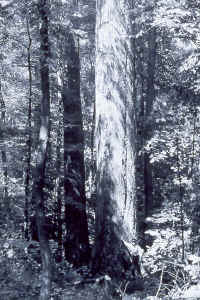 |
This photo was taken in the early '30's and is none other than the "Mill Creek
Monster" near Cades Cove, TN, GRSM. It is 22'10" in girth I believe at least one of
the top 5 in mass known.
|
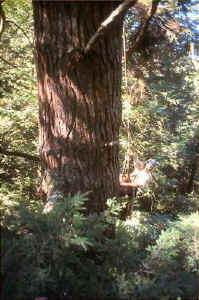 |
The Yonaguska
hemlock, formerly the largest known hemlock, now dead.
Photo by Michael Davie
An excerpt from Bob Leverett May 05, 2004:
"...takes us back to the earlier days of ENTS when
determining volume of the Smoky Mountain behemoths was a
priority with us. We were fixated on the 1000-cubic-foot
monsters, which promoted Will to climb several huge Smoky
Mountain hemlocks in the Cataloochee district of the Park. We
measured one to 1500+ cubic feet. That was the great Yonaguska
hemlock. Though no longer alive, it is still our volume record
holder..."
|
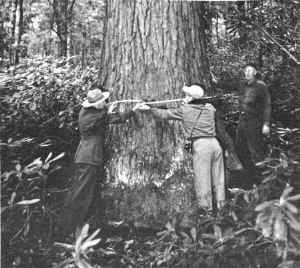 |
Here is a website link that has a photo of the "largest
hemock in Great Smoky National Park" I thought it
might be useful as a historical context for your work in the
park.
Naturalists measure the largest known
eastern hemlock, which has a trunk circumference of 19 feet, 10
inches. Courtesy, Dr. William Hutson.
|